
Roots
There exists within each strand a universe of memory, a chronicle whispered across generations, a living connection to that which has come before. For those whose ancestry traces through the vibrant tapestries of African and diasporic lands, textured hair is not merely a biological attribute. It stands as a profound testament to enduring spirit, a keeper of ancient wisdom, and a canvas bearing the imprint of collective identity. The intricate coils, the resilient springs, the deeply set patterns hold a heritage that extends beyond mere aesthetics, reaching into the very core of who we are and where we originate.
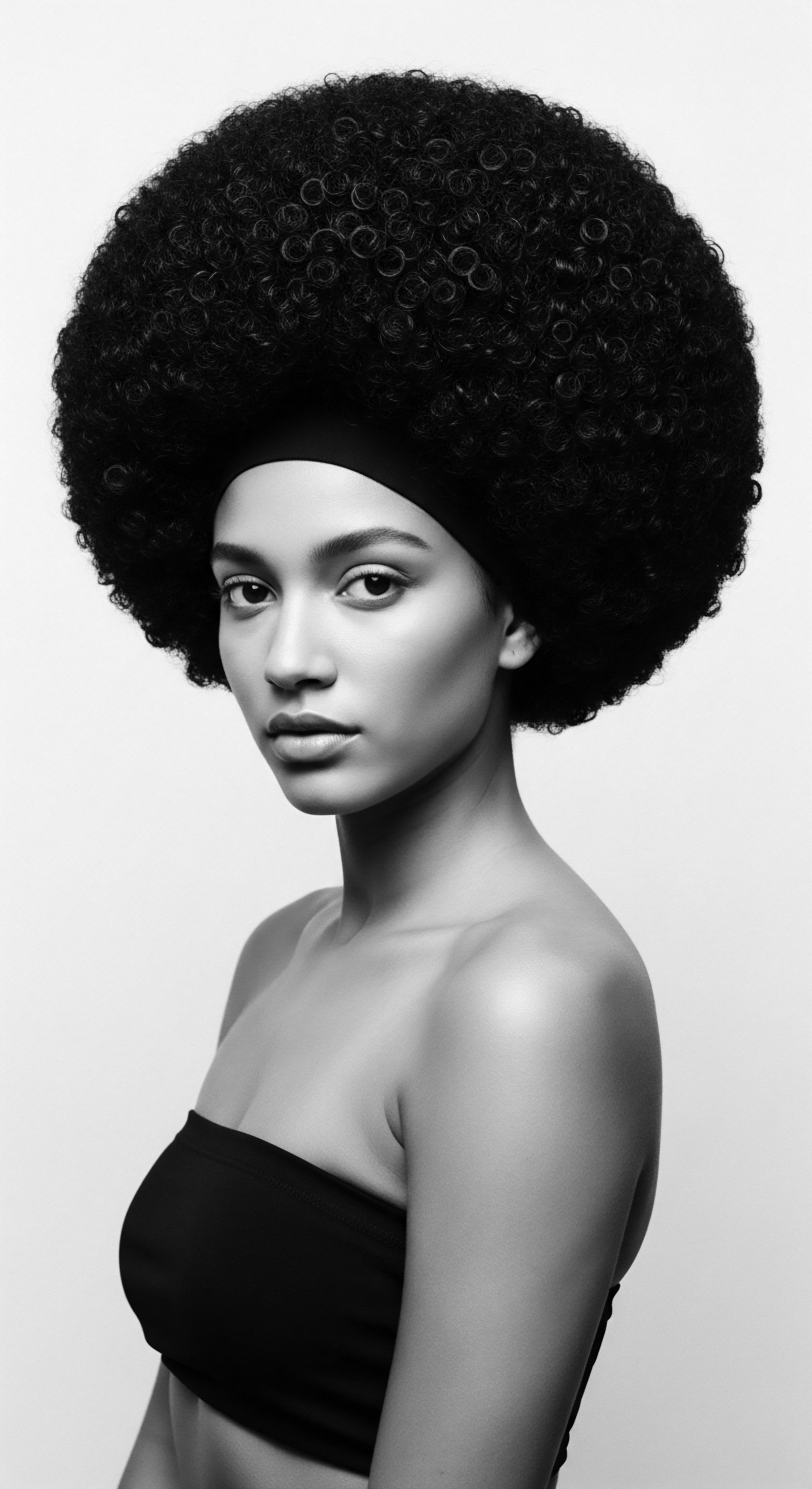
The Sacred Helix
From the molecular architecture of each hair shaft, extending to the grand historical narratives, understanding textured hair begins with appreciating its unique biological design. The curl and coil patterns, often defined by the elliptical shape of the follicle and the distribution of keratin proteins, provide both strength and distinct visual character. This inherent architecture, once pathologized by Eurocentric beauty dictates, now stands recognized for its natural resilience and beauty. The helical growth pattern allows for extraordinary volume and varied styling possibilities, attributes deeply valued in many ancestral practices.
Across vast stretches of African history, hair was seen as a conduit between the human and the divine. The topmost part of the head, from which hair grows, was often considered the closest point to the heavens, a sacred entry for spiritual energy. This belief transformed hair care into a ritualistic act, connecting individuals not only to their communities but also to their ancestors and the spiritual realms.
The very act of washing, oiling, and adorning hair became a conversation with the past, a way to honor lineage and seek guidance. This deep reverence for hair as a spiritual anchor persists in many traditions, shaping how textured hair is regarded as a sacred part of the self.
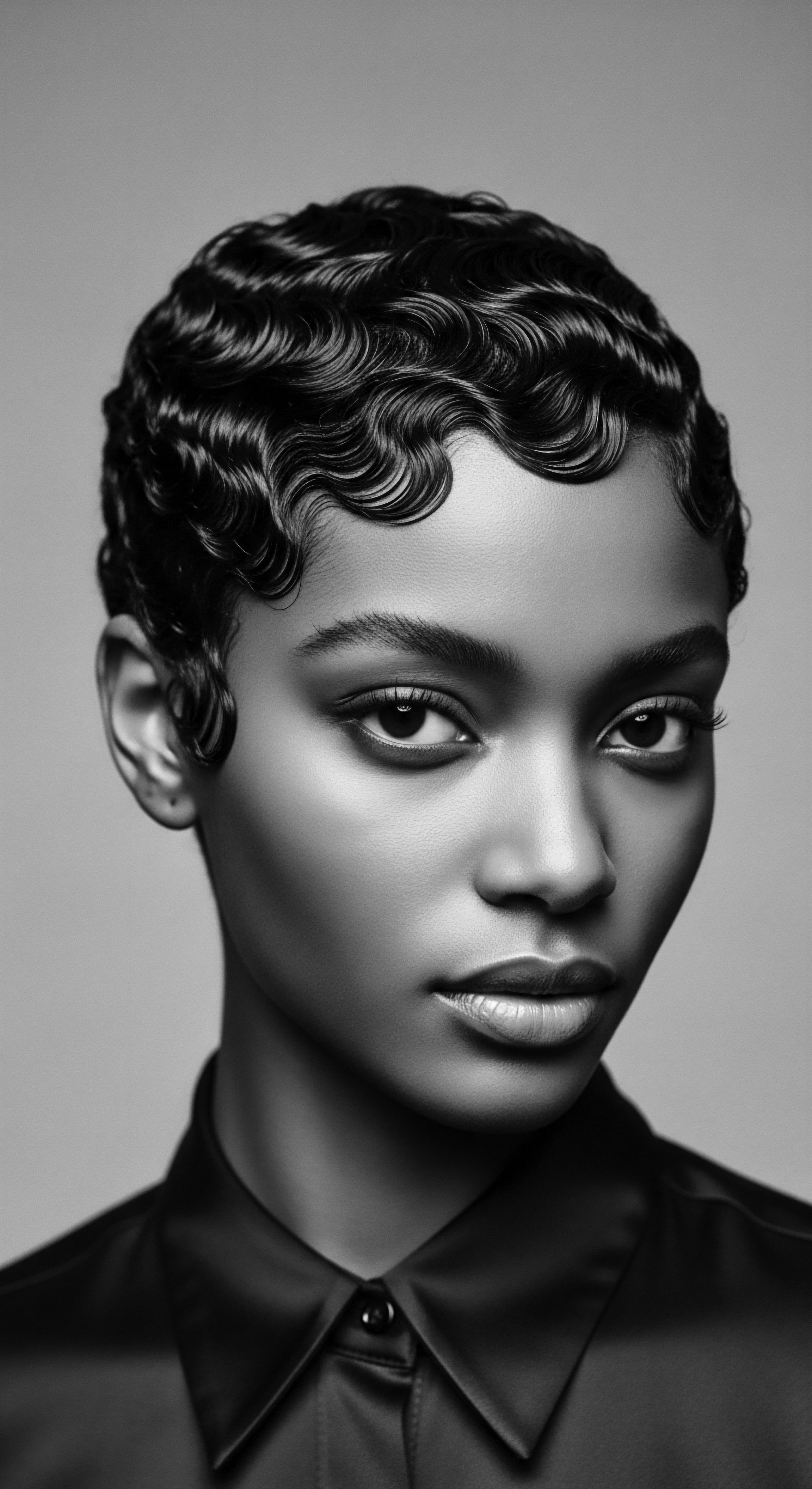
Hair Anatomy and Ancestral Knowing
The science of textured hair reveals a captivating interplay of genetics and environment. A cross-section of a coily hair strand, for instance, often shows an oval or flat shape, which causes the hair to curl back on itself as it grows. This structural characteristic contributes to the hair’s unique volume and often its thirst for moisture, a need long understood and addressed by ancestral care regimens.
Traditional practices, like the use of shea butter or various plant-derived oils, intuitively catered to these biological needs, demonstrating a deep, observational knowledge of hair health long before modern chemistry articulated the molecular mechanisms. Our ancestors understood that well-nourished hair, pliable and strong, was a sign of health and often, prosperity.
In many indigenous African societies, the act of styling hair was a communal endeavor, a moment of shared time and storytelling. It created a bond among family members, a tangible thread linking generations through shared touch and inherited techniques. The rhythm of braiding, the quiet exchange of wisdom, transformed a physical act into a profound social occasion. This legacy highlights the importance of human connection in the maintenance of hair, extending beyond individual care to collective well-being.
Textured hair is a living archive, carrying ancestral wisdom and reflecting the profound bond between humanity and the natural world.

Hair Classification Systems and Cultural Echoes
The journey to classify textured hair has been fraught with historical biases, yet it also serves to recognize its vast diversity. Early attempts at categorization, often rooted in colonial perspectives, sometimes ranked hair textures based on proximity to European hair types, inherently devaluing coily strands. However, contemporary systems seek to describe hair based on its distinct curl patterns, from loose waves to tightly coiled formations, acknowledging the spectrum of human hair variations.
This shift allows for a more accurate and respectful language, moving away from historical prejudices to a celebration of diversity. Understanding these classifications aids in appreciating the specific needs of each curl pattern.
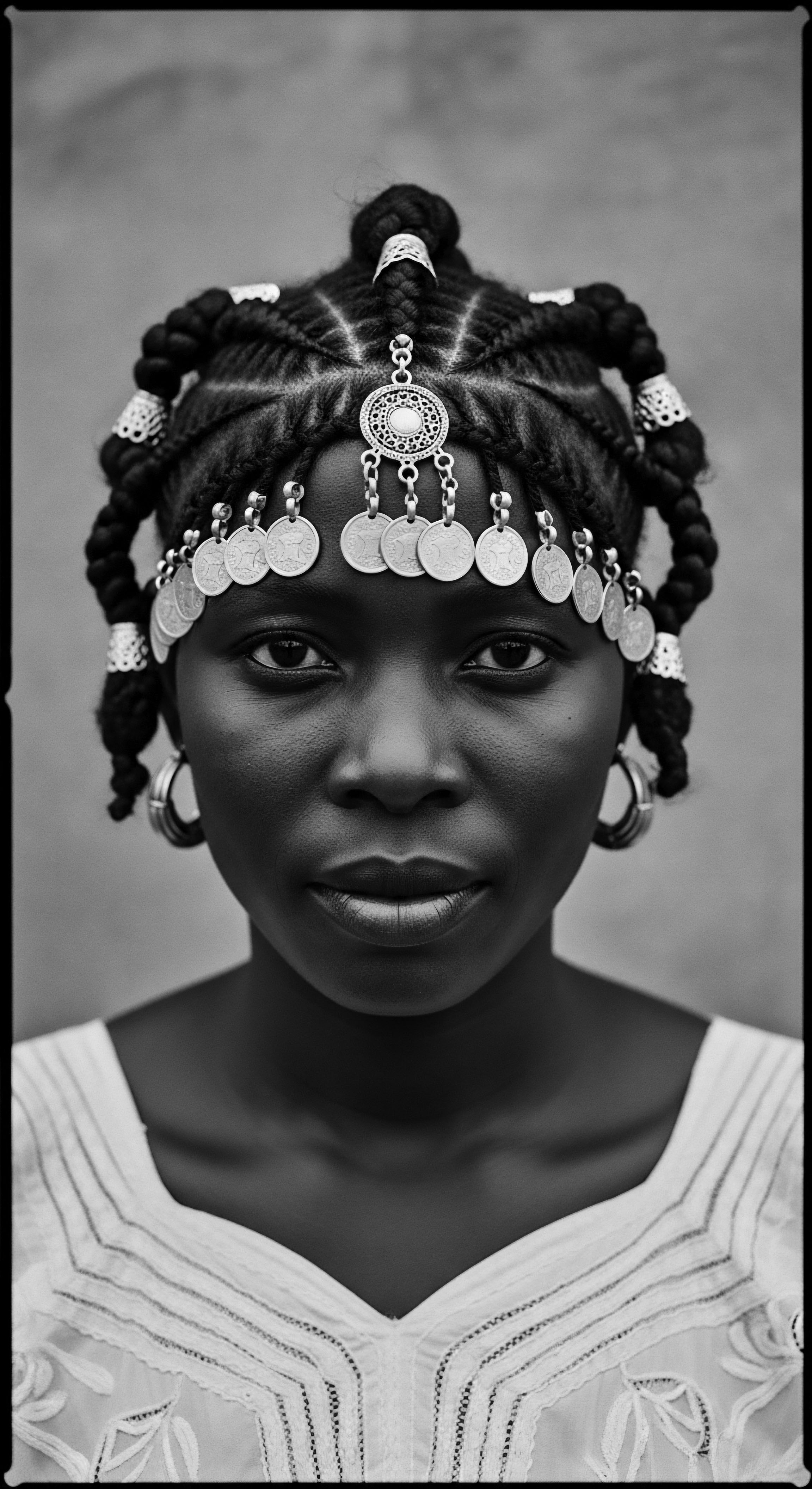
The Ancestral Lexicon of Hair
The language surrounding textured hair in Black and mixed-race communities is rich with terms that describe not only hair types but also the practices and cultural significance associated with them. Terms like Kinky, Coily, Nappy, and Afro have evolved in meaning, sometimes used pejoratively during periods of oppression, only to be reclaimed as affirmations of beauty and resistance. Words like Cornrows, Locs, and Bantu Knots refer to specific styles that carry historical weight, communal memory, and expressions of identity. These words form a unique lexicon, a verbal heritage that speaks volumes about community resilience and cultural continuity.
- Irun Kiko ❉ A Yoruba term for thread-wrapping styles, often associated with femininity and rites of passage.
- Tignon Laws ❉ Historical ordinances in colonial Louisiana requiring free women of color to cover their hair, an act of resistance against visible Black identity.
- Afro-Pick ❉ A styling tool that became a symbol of Black nationalism and pride during the Civil Rights era.
The evolution of these terms mirrors the larger journey of self-acceptance and affirmation within communities. They are not merely descriptors; they are echoes of struggle, joy, and the continuous shaping of identity. The deliberate choice to use language that honors these textures, rather than diminishing them, reinforces the foundational respect for textured hair’s heritage. The shift in public discourse, embracing terms once used to denigrate, signals a powerful reclamation of inherent beauty and cultural worth.

Ritual
The rhythm of care and creativity, passed down through generations, marks the ritual of textured hair styling. From the foundational preparations to the intricate designs, each act of shaping and adorning hair carries the weight of history and the lightness of personal expression. These practices, rooted deeply in communal traditions, speak to a profound heritage where hair became a living language of identity, status, and collective memory. The routines of cleansing, conditioning, and coiling become more than mere tasks; they are a tender dialogue with the past, a reaffirmation of belonging.
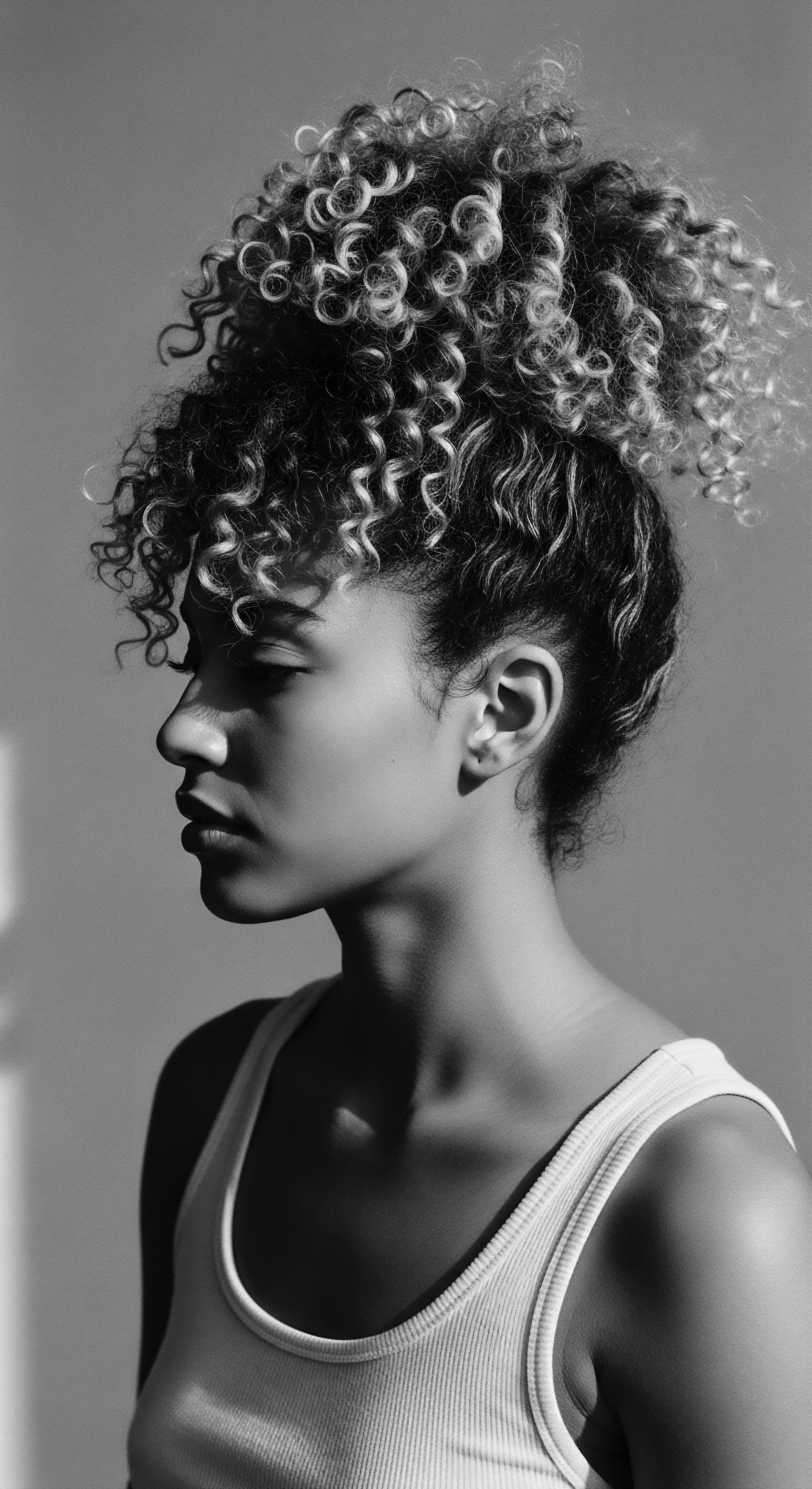
The Art of Protective Styling
Protective styles, a cornerstone of textured hair care, represent a practical and profound heritage. These styles, which tuck away fragile ends and minimize manipulation, have existed in African cultures for centuries. They served practical purposes in various climates and demanding lifestyles, protecting hair from the elements, but also carried deep social and spiritual meanings.
The legacy of these styles speaks to ingenuity and care, a wisdom developed over millennia to preserve hair health while communicating identity. Styles like Cornrows, Box Braids, and Twists, popular today, have direct ancestral counterparts, often distinguished by the patterns, parts, and adornments chosen.
| Traditional Practice Braiding Rice Seeds (Transatlantic Slave Trade) |
| Cultural Context / Heritage Link Enslaved African women braided rice seeds into their hair for survival and cultural continuity during forced migration. |
| Contemporary Relevance / Evolution Symbol of resilience; a historical act of resistance that informs modern cultural significance of braids. |
| Traditional Practice Intricate Cornrow Patterns as Maps |
| Cultural Context / Heritage Link Used by enslaved Africans to communicate escape routes to freedom. |
| Contemporary Relevance / Evolution Cornrows as symbols of agency, intelligence, and collective resistance, retaining deep cultural meaning. |
| Traditional Practice Hair Threading (e.g. Irun Kiko) |
| Cultural Context / Heritage Link Yoruba women used thread for sculptural styles signifying status, age, or readiness for marriage. |
| Contemporary Relevance / Evolution Modern thread-wrapping techniques echo this tradition, offering unique texture and elongating hair without heat. |
| Traditional Practice These practices underscore the enduring adaptive spirit of textured hair heritage. |
The sheer artistry involved in creating these styles is a legacy itself, passed from elder to youth, from hand to hand. The techniques require patience, skill, and an intimate understanding of the hair’s character. This communal sharing of knowledge fostered bonds and reinforced social structures within communities. The braids themselves could signify marital status, age, tribal affiliation, or even a community role.

How do Traditional Styling Tools Connect to Our Hair’s Living Heritage?
The implements used in textured hair care tell their own stories of human ingenuity and connection to the natural world. From ancient combs carved from wood or bone, designed to detangle and sculpt, to the modern tools that echo their forms, each carries a history. The meticulous process of washing, oiling, and adorning hair was a holistic ritual, involving natural elements like shea butter, palm oil, and various herbal infusions. These traditional tools and ingredients speak to a deep, empirical knowledge of botanical properties and hair health, long before the advent of industrial chemistry.
The enduring presence of these tools, whether the original artifacts in museums or their contemporary iterations, reminds us that the quest for healthy, beautifully styled hair is a continuum. It bridges the chasm of time, linking current practices with the ancient hands that first manipulated coils and curves with grace and purpose. The wisdom embedded in their design speaks of a heritage of self-sufficiency and resourcefulness, utilizing what the land provided to nourish and beautify.

Transformations and Cultural Fluidity
Textured hair has always been capable of remarkable transformations, a fluidity that mirrors the adaptive spirit of the communities it adorns. From elaborate up-dos adorned with cowrie shells and beads to simpler, functional styles, the hair has served as a dynamic medium for expression. Even during periods of intense oppression, creative transformations became acts of quiet defiance. The versatility of textured hair allowed for coded messages and subtle assertions of identity when overt declarations were perilous.

What Role Did Hair Play in Voicing Identity during Periods of Suppression?
During the transatlantic slave trade, when overt cultural expression was brutally suppressed, hair became a powerful, albeit subtle, vehicle for resistance and identity preservation. Enslaved African women, often stripped of their languages, names, and families, found agency in their hair. They would braid rice seeds into their hair before being forcibly transported, carrying a literal piece of their homeland and a means of survival into an uncertain future.
This profound act, a desperate attempt to carry sustenance and heritage, speaks volumes about the intrinsic link between textured hair and cultural survival. Furthermore, intricate cornrow patterns were sometimes used as coded maps, guiding individuals towards freedom and escape from plantations.
This history underscores a deeper truth ❉ hair, in its very structure and the ways it is styled, transcends mere appearance. It communicates narratives of endurance, ingenuity, and a refusal to be culturally erased. The transformation of hair in these contexts was not simply aesthetic; it was a profound declaration of self, a silent shout for dignity in the face of dehumanization. These historical acts resonate deeply today, informing the ongoing movements to embrace natural hair as a symbol of pride and liberation.

Relay
The transmission of wisdom across generations forms the heart of heritage. For textured hair, this relay of knowledge extends from the elemental biology of the strand to the complex sociopolitical landscapes it has navigated. It is a story told not only through ancestral rituals and community bonds but also through the ongoing dialogues that shape identity and cultural belonging in a contemporary world. This living legacy, resilient and ever-evolving, requires us to understand its intricacies, grounded in both rigorous study and deep empathy for lived experiences.
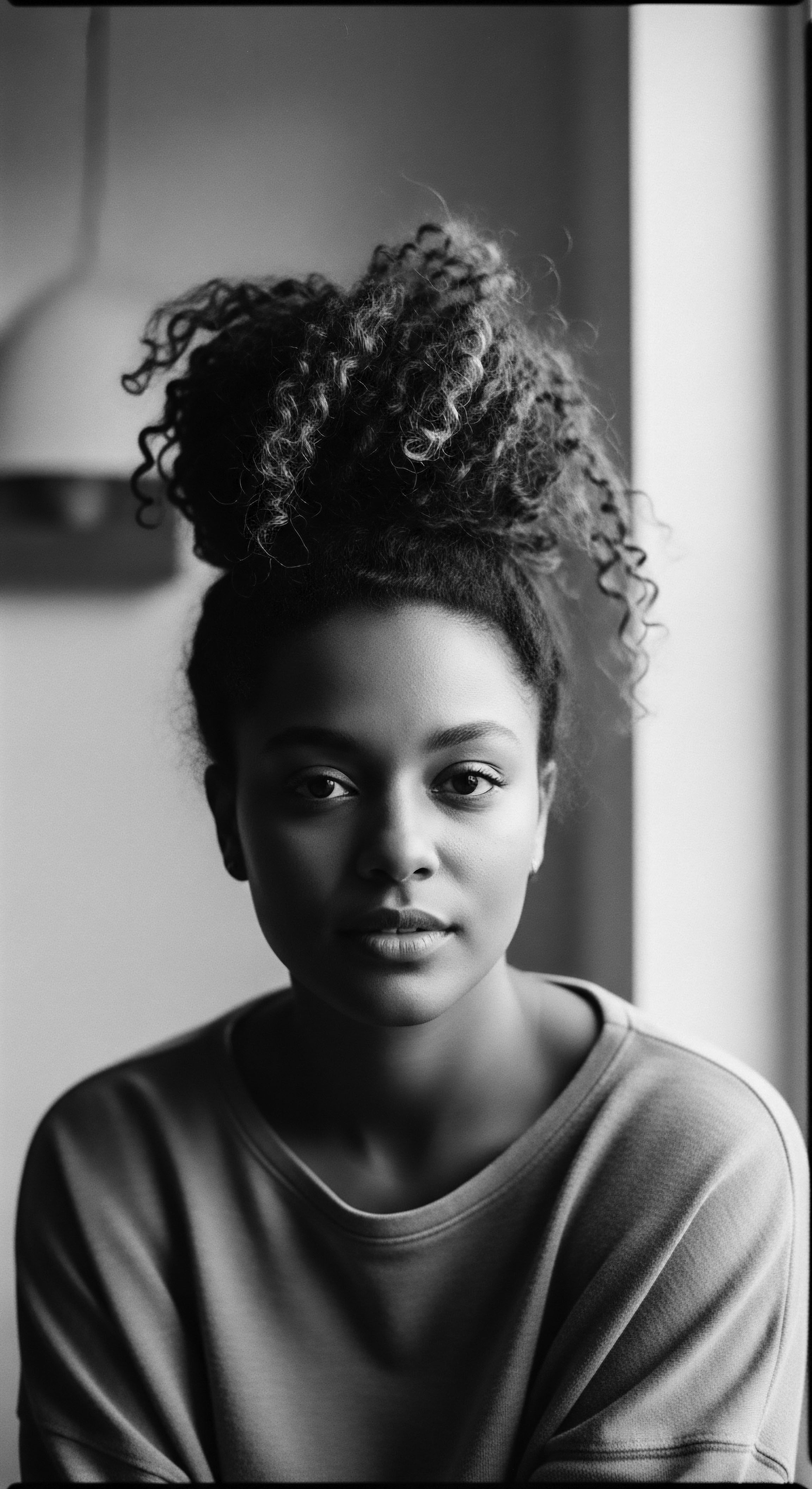
The Sociopolitical Helix of Identity
Textured hair, particularly within Black and mixed-race communities, has served as a profound marker of identity, often positioned at the intersection of personal expression and societal gaze. In pre-colonial Africa, hair communicated social status, age, marital standing, tribal affiliation, and spiritual beliefs with remarkable specificity. A person’s hairstyle was a public declaration of their place within the community, a visual language understood by all. For example, among the Yoruba people of Nigeria, certain intricate hairstyles were associated with roles within the community, and hair itself was seen as sacred, a connection to ancestors and deities.
The transatlantic slave trade drastically disrupted these systems of meaning. Enslaved Africans were often forcibly shorn of their hair, an act of dehumanization designed to strip them of cultural identity and sever ties to their heritage. This violent disruption began a centuries-long struggle for the reclamation of hair as a symbol of self-hood and cultural pride. The imposed Eurocentric beauty standards that followed slavery led many to chemically alter their hair, seeking acceptance in a society that devalued their natural textures.
Textured hair embodies a powerful visual history, communicating resilience and cultural self-determination against a backdrop of societal pressures.
In the mid-20th century, a significant turning point emerged with the Civil Rights and Black Power movements. The Afro hairstyle, worn by icons such as Angela Davis and members of the Black Panther Party, became a potent symbol of Black pride, resistance, and a rejection of assimilationist pressures. This natural hairstyle was a political statement, asserting a powerful return to African roots and challenging prevailing beauty norms. This period marked a collective re-embrace of textured hair in its unaltered form, cementing its status as a visible sign of self-love and solidarity within the Black community.
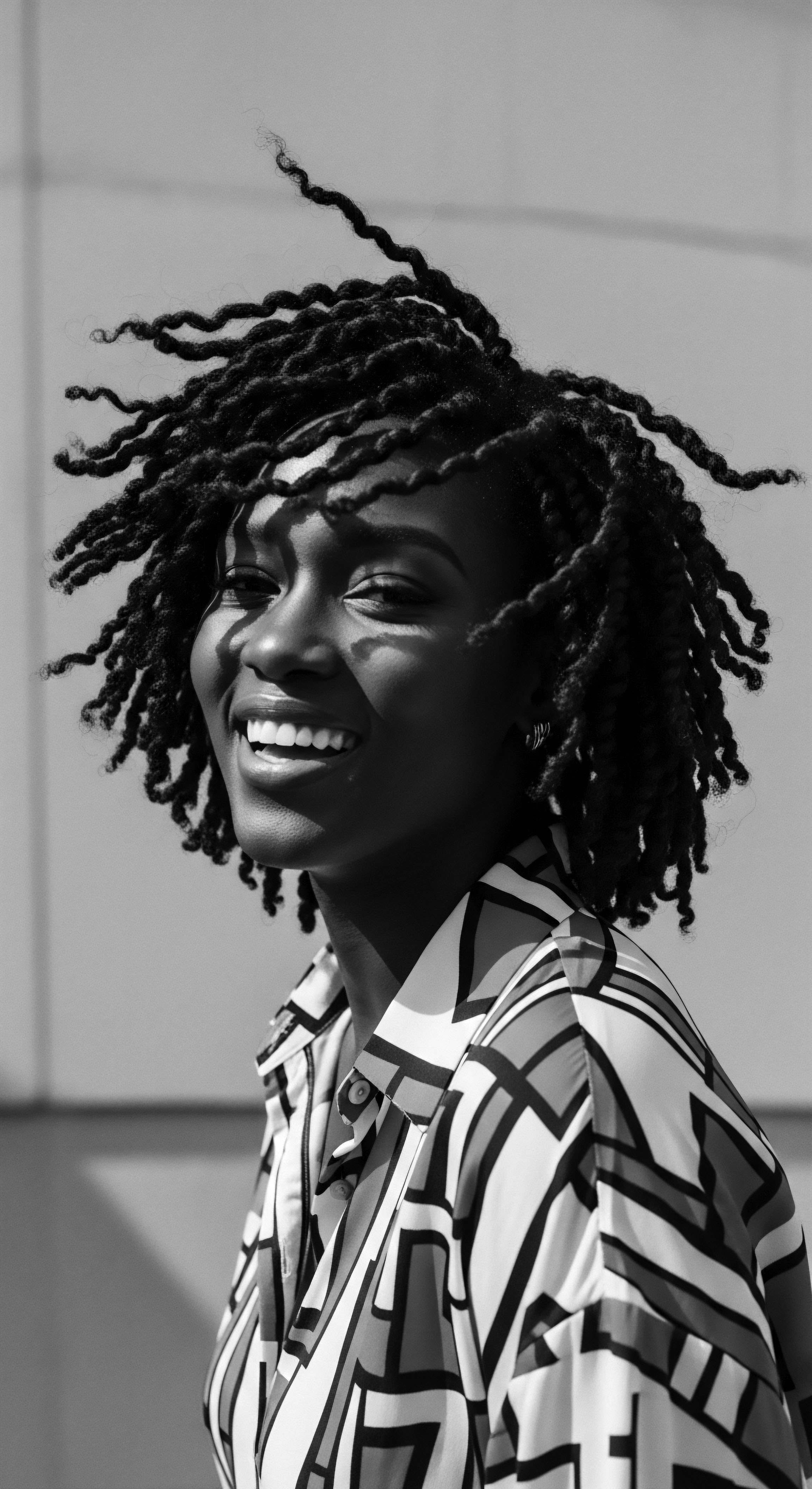
How does Hair Texture Inform Our Collective Understanding of Identity and Belonging?
The texture of hair itself holds significant social meaning, shaping how individuals are perceived and treated. Studies indicate that hair texture can influence racial perception, at times even supplanting skin color in defining racial differences. This dynamic plays out in real-world scenarios, particularly in educational and professional environments. Despite the rich cultural significance and protective qualities of many textured hairstyles, individuals with coily and kinky hair often face discrimination and bias, rooted in historical prejudices that deem such hair as “unprofessional” or “unsuitable.”,
For instance, a study by Tracey Owens Patton found that Black female representatives with lighter skin tones and hair traits associated with mixed ethnicity (like wavy or straight hair) often experienced preferential treatment, being assigned to domestic roles during slavery, while those with darker skin and more tightly coiled hair were relegated to more brutal field labor. (Owens Patton, 2006, p. 26).
This historical context, where hair texture dictated one’s very existence and suffering, underscores the deep-seated nature of hair-based discrimination. The legacy of these biases continues to impact how textured hair is perceived in contemporary society, making the choice to wear natural styles an act of affirmation and often, activism.
The contemporary natural hair movement, amplified by social media, continues this legacy of reclamation. It provides a platform for education, community-building, and the sharing of care practices, allowing many to reconnect with their hair in its natural state after years of chemical alteration. This movement signifies a shift in beauty standards and a redefinition of what it means to be beautiful within the Black community and beyond.

The Science and Sociology of Textured Hair
Beyond its cultural symbolism, textured hair presents unique biological considerations that intersect with sociological realities. Its helical structure, while visually striking, can make it prone to dryness and breakage if not properly cared for. This biological reality has, over time, led to the development of specific care regimens and traditional ingredients tailored to nourish and protect these unique strands. The intuitive knowledge of moisture retention, scalp health, and gentle manipulation, passed down through generations, often aligns with modern scientific understanding of hair biology.
The economic impact of textured hair care also reflects its cultural significance. The Black haircare market, while substantial, has historically seen a disproportionately small percentage of ownership by Black entrepreneurs. Despite Black consumers driving a significant portion of beauty spending, Black-owned brands represent only a small fraction of the overall ethnic hair and beauty market, indicating a need for continued economic empowerment within the community.
(SkyQuest Technology, 2024, p. 2)
The scientific study of hair characteristics, including texture, is moving beyond outdated racialized classifications to a more nuanced understanding of human diversity. Research in biological anthropology is exploring the evolutionary roots of hair diversity, suggesting that tightly curled hair may have offered protective advantages against solar radiation in ancestral environments. This scientific perspective validates the protective and functional aspects of textured hair, adding another layer to its heritage narrative.
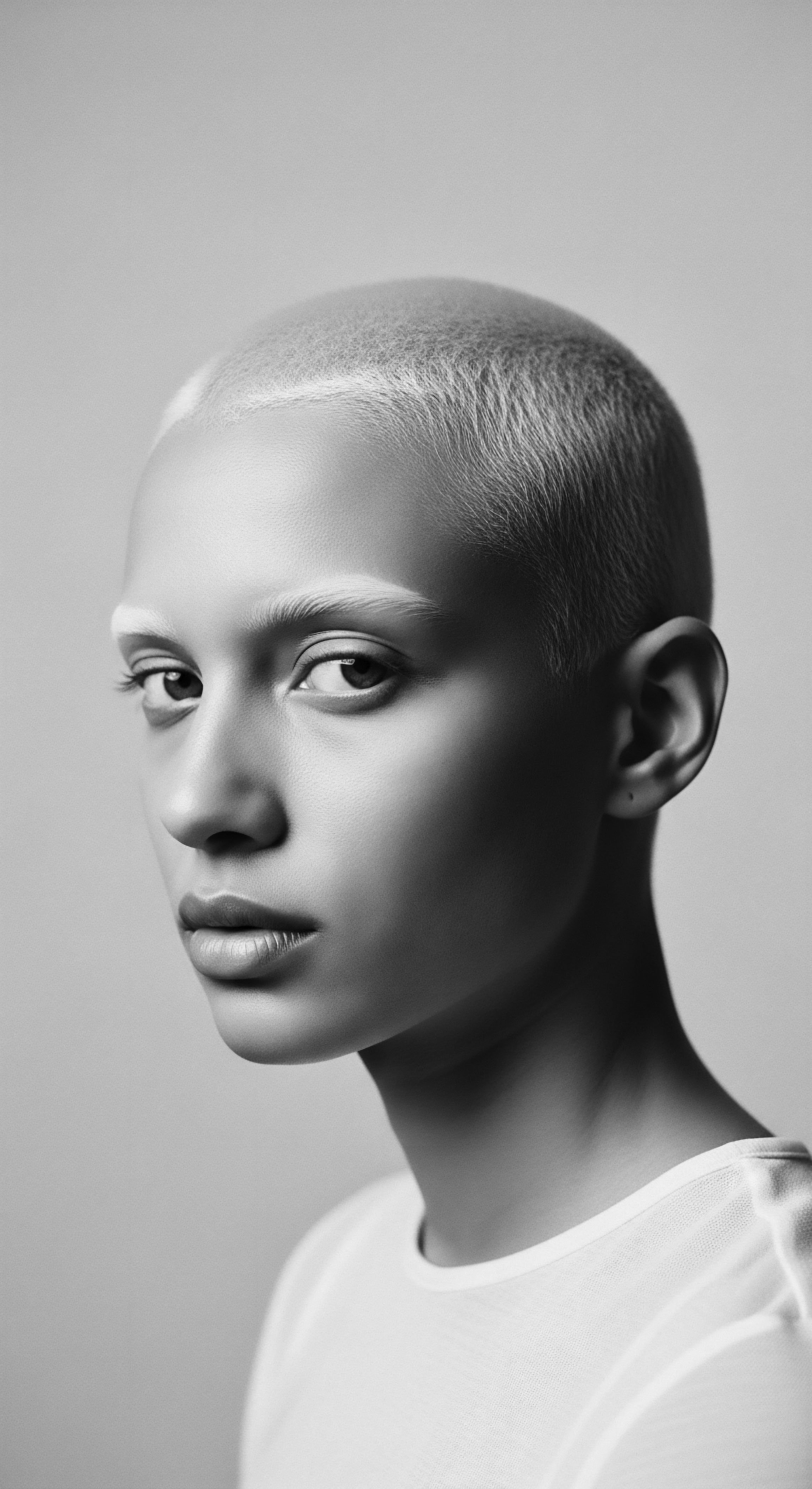
Can Understanding Hair’s Structure Deepen Our Appreciation of Its Ancestral Care Methods?
Understanding the unique structure of textured hair certainly enriches our appreciation for ancestral care methods. The inherent characteristics, such as varied curl patterns and potential for dryness due to the open cuticle, necessitate specific approaches to moisture and manipulation. Our ancestors, through observation and empirical practice, developed sophisticated regimens using readily available natural resources.
Shea butter, a prominent ingredient in West African communities, provides intense moisture and protection, directly addressing the hair’s need for hydration. Coconut oil, widely used across various African and diasporic cultures, offers deep conditioning and helps to reduce protein loss.
Consider the practice of Hair Oiling, a tradition observed across many African communities. Modern science confirms that oils can penetrate the hair shaft, reinforcing its strength and elasticity, and sealing in moisture. This scientific validation of long-standing practices underscores a powerful truth ❉ ancestral wisdom was often a form of applied science, honed through generations of lived experience and deep connection to the environment.
The intricate processes of cleansing, conditioning, and detangling were not arbitrary; they were meticulously developed responses to the hair’s natural inclinations, ensuring its health and vitality. This knowledge, conveyed through hands-on teaching and communal care, truly highlights a legacy of deep biological understanding integrated into cultural practice.
The dialogue between contemporary hair science and ancestral practice offers fertile ground for innovation and continued respect for heritage. It allows us to understand the “why” behind the “what,” celebrating the ingenuity of our forebears while continuing to develop new approaches that honor the hair’s unique needs. This interplay reinforces the idea that textured hair care is a continuous conversation, a living archive of scientific discovery intertwined with cultural wisdom.

Reflection
A single strand of textured hair, in its delicate coil or resilient kink, holds more than just genetic code. It carries the weight of history, the whispers of ancestors, and the vibrant pulse of cultural identity. The journey of textured hair, from its sacred origins in pre-colonial African societies to its role as a banner of resistance and self-acceptance in the diaspora, speaks to a profound and enduring heritage. It is a story not of static forms, but of dynamic adaptation, an unfolding narrative of survival, beauty, and unwavering spirit.
The legacy of textured hair is a testament to the ingenuity of communities who, facing immense pressures, preserved and celebrated their unique attributes. The communal rituals of care, the intricate styles that communicated identity and social standing, and the powerful acts of resistance woven into braids are not distant echoes. They are living practices, continually reinterpreted, asserting their relevance in every salon chair, every shared styling session, and every conscious decision to wear hair in its natural state.
This deep connection, a profound meditation on textured hair, its heritage, and its care, invites us to look beyond surface appearances. It urges us to see the resilience in every curl, the history in every coil, and the unwavering spirit of identity in every natural crown. The ongoing dialogue between ancestral wisdom and modern understanding, between personal expression and collective heritage, ensures that the story of textured hair remains a living, breathing archive. It reminds us that our hair is a continuous conversation with our past, shaping our present, and defining our future.
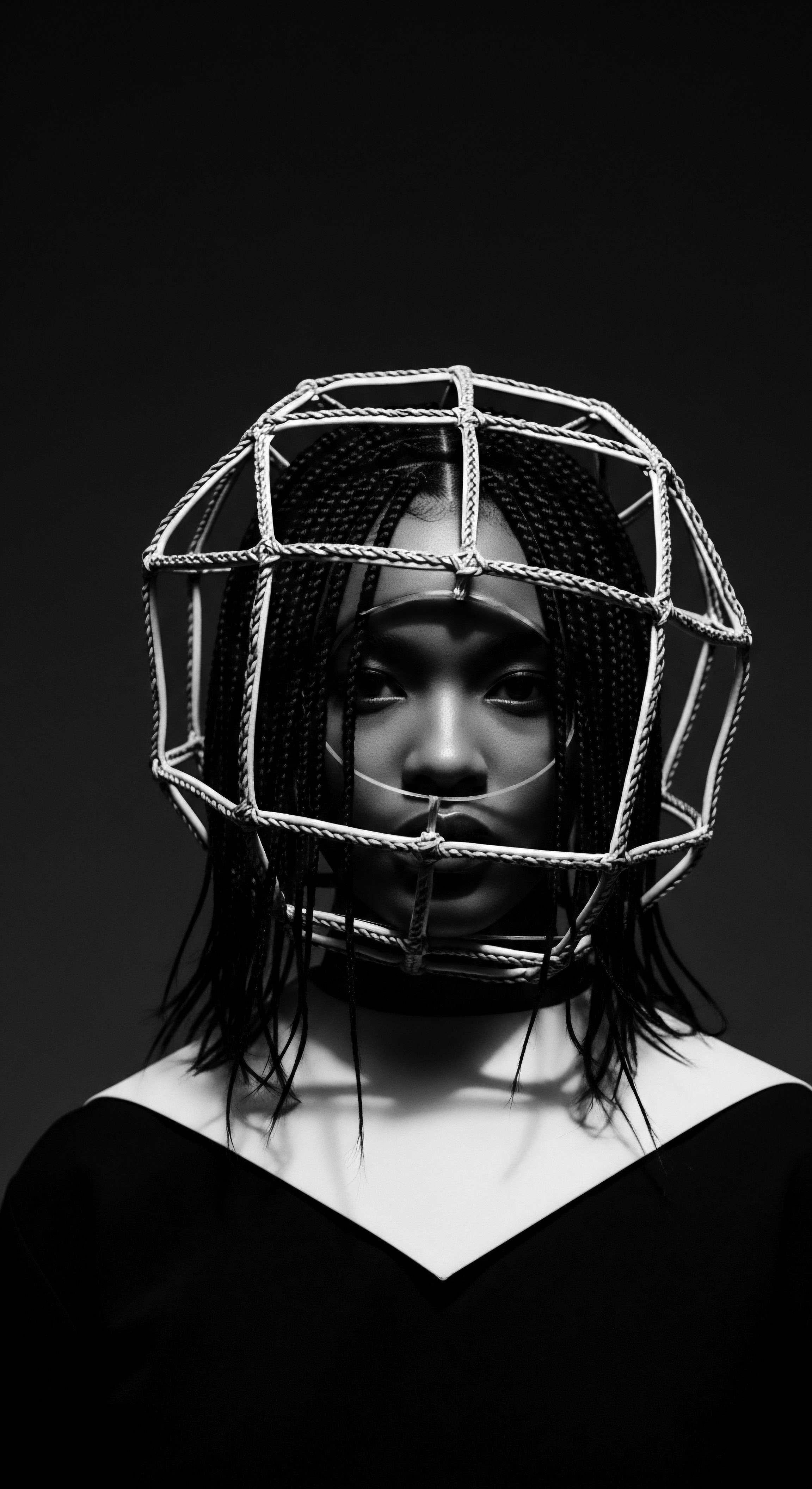
References
- Byrd, Ayana D. and Lori L. Tharps. Hair Story ❉ Untangling the Roots of Black Hair in America. St. Martin’s Griffin, 2014.
- Cobb, Jasmine N. New Growth ❉ The Art and Texture of Black Hair. Duke University Press, 2023.
- Dabiri, Emma. Twisted ❉ The Tangled History of Black Hair Culture. Dey Street Books, 2020.
- Banks, Ingrid. Hair Matters ❉ Beauty, Power, and Black Women’s Consciousness. New York University Press, 2000.
- Patton, Tracey Owens. “Hey Girl, Am I More Than My Hair? African American Women and Their Struggles with Beauty, Body Image, and Hair.” NWSA Journal, vol. 18, no. 2, 2006, pp. 24-51.
- Robinson, Carla. “Hair as Race ❉ Why “Good Hair” May Be Bad for Black Females.” Howard Journal of Communications, vol. 22, no. 4, 2011, pp. 358-376.
- Johnson, T. A. and T. Bankhead. “Hair It Is ❉ Examining the Experiences of Black Women with Natural Hair.” Open Journal of Social Sciences, vol. 2, 2014, pp. 86-100.
- Chimbiri, K. N. The Story of Afro Hair. Scholastic, 2021.
- Mercer, Kobena. “Black Hair-Style Politics.” Out There ❉ Marginalization and Contemporary Cultures, edited by Russell Ferguson et al. MIT Press, 1990, pp. 247-264.
- Akanmori, Patience. “Hair Styling and the Significance Attached to This Practice Have Played an Important Role in the African Traditional Culture.” The SAGE Encyclopedia of African Cultural Heritage in North America ❉ Hairstyles, Traditional African, SAGE Publications, Inc. 2015.
